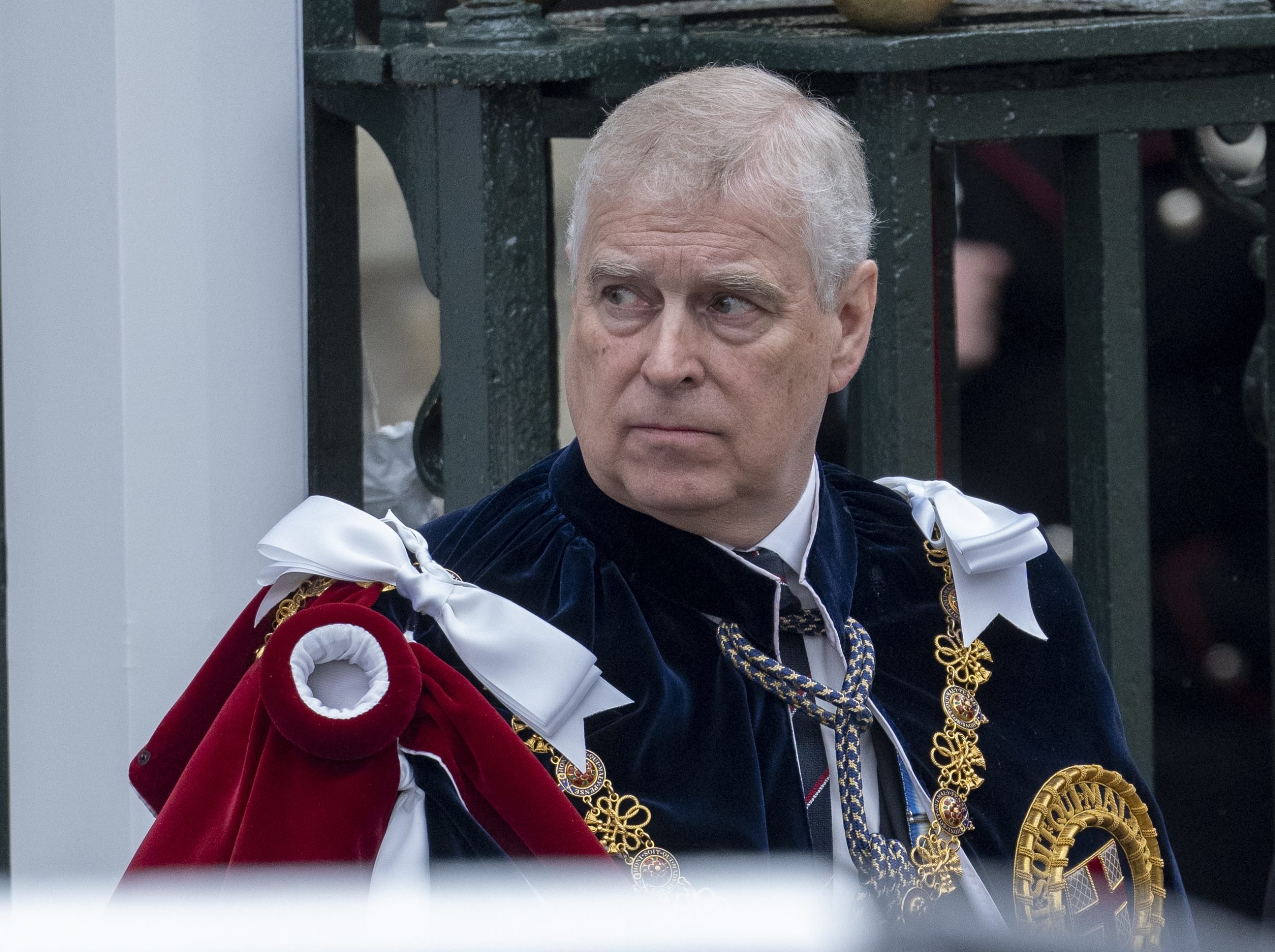
Just as Prince Andrew dared to dream that his humiliations of 2019 might be fading from the public’s collective memory, overshadowed by a slew of more recent royal scandals, they may be about to enter the public eye once again. A photograph taken shortly before Andrew’s catastrophic interview with BBC Newsnight’s Emily Maitlis has been offered to the National Portrait Gallery (NPG) in London by photographer Mark Harrison, leaving the museum to decide whether it will accept.
The museum confirmed in an email that the offer is “being considered via our standard acquisitions process.” Acquisitions, including gifts, are decided upon by the museum’s curators. The London Times has reported that a print of the photo will be presented at a future acquisitions meeting but a decision is not expected until a new chief curator is appointed. It would also need to be approved by the board of trustees.
If acquired, the photograph would join a collection that is already chock-a-block with records of Britain’s royal history, though it would surely be classed as one of the more regrettable episodes. Across the centuries, generations of kings and queens have posed for majestic portraits that emphasized their dignity, pomp, and splendor. What would these monarchs have made of Andrew’s sojourns to Mar-a-Lago with convicted sex offender Jeffrey Epstein, or his subsequent downfall?
“It was not something that was becoming of a member of the Royal family… I let the side down.”
Prince Andrew speaks exclusively to #Newsnight about his decision to stay with convicted sex offender Jeffrey Epstein https://t.co/Jo2mHaTrPi
WATCH: Saturday 21:00 @BBCTwo @maitlis pic.twitter.com/jZzpj7RwBe
— BBC Newsnight (@BBCNewsnight) November 15, 2019
As the Epstein sex-trafficking scandal became front page news in 2019, allegations soon surfaced against the apparently unprincipled prince. The pair had been close for many years, though Prince Andrew denies having any knowledge of Epstein’s trafficking of teenage girls in collaboration with British socialite Ghislaine Maxwell. Epstein and Maxwell were both arrested on federal sex trafficking charges, but Epstein died by suicide in prison in August 2019 while awaiting trial.
In November 2019, Andrew’s P.R. advisors made the curious decision to let him defend himself to Maitlis, then a lead anchor of the BBC’s current affairs program Newsnight, where she regularly interviewed some of the U.K.’s top politicians. During the 50-minute interview, the prince’s somewhat illogical answers ultimately failed to convince the world of his innocence.
A mural of Prince Andrew, Duke of York is seen in Shoreditch on July 1, 2020 in London, England. The prince had come under increased scrutiny over his relationship with deceased sex offender Jeffrey Epstein and British socialite Ghislaine Maxwell. Photo: Guy Smallman/Getty Images.
Not all objects that enter a museum’s collection go on public display, but if the photograph from this disastrous interview does, will Prince Andrew break a sweat? Among the many quotable moments from the interview was the prince’s claim that he does not sweat due to an “overdose of adrenaline in the Falklands war.” This was provided as evidence against a claim made by Virginia Giuffre that in 2001, when she was 17 years old, Andrew assaulted her after dancing at Tramp nightclub. She had described him as being sweaty on this occasion.
In 2021, Andrew’s lawyer rejected a request to provide documents proving his professed medical inability to sweat in a civil case brought against him by Giuffre in New York. The case was eventually settled out of court in 2022.
When asked to explain his decision to visit Epstein’s house in New York in December 2010, allegedly to celebrate Epstein’s release from house arrest, the prince said he attended in order to tell Epstein that, in light of his actions, “it was inappropriate for us to be seen together.” Rather than deliver this message from afar, he felt compelled to stay at the convicted sex offender’s house for four days because, “it was the honorable and right thing to do.”
The front pages of national newspapers the day after Prince Andrew suspended his work with his charities, organizations and military units because of the fallout from his friendship with sex offender Jeffrey Epstein. Photo: Zoe Linkson/PA Images via Getty Images.
With internationally embarrassing proclamations such as these, has Andrew “shaped British history and culture?” That’s the criteria to get into the NPG, according to its website. The interview did have seismic reverberations for the royal family: Following ongoing public criticism, Andrew resigned from public roles in May 2020, and his honorary military affiliations and royal charitable patronages were removed by the Queen in January 2022.
Another factor that the NPG considers when it comes to adding a work to its holdings is whether or not the individual it depicts is already well-represented within the collection. Prince Andrew is currently the subject of a bronze head made by Franta Belsky in 1984 and appears in 37 photographs, most of which are from his childhood.
As controversial royal portraits go, this one is likely to take the heat off Jonathan Yeo’s divisive image of King Charles or a much derided cover of Tatler magazine featuring Kate Middleton.